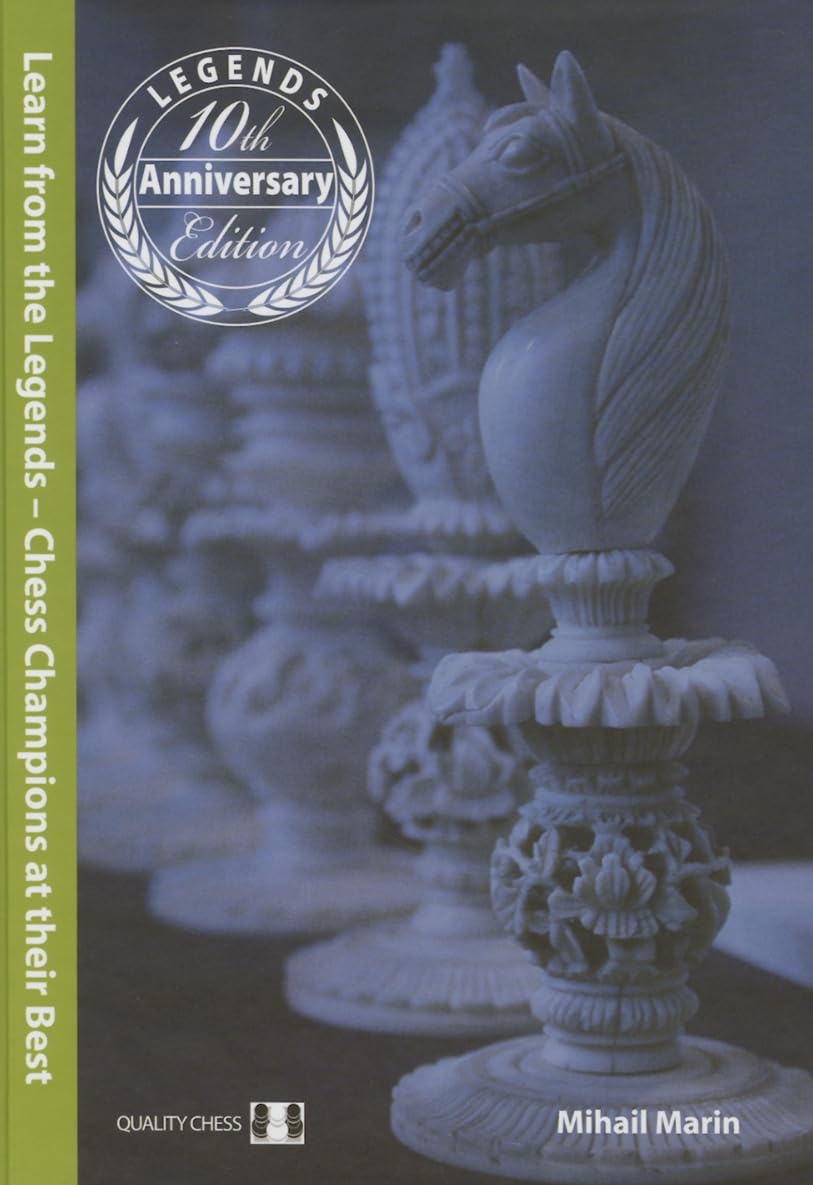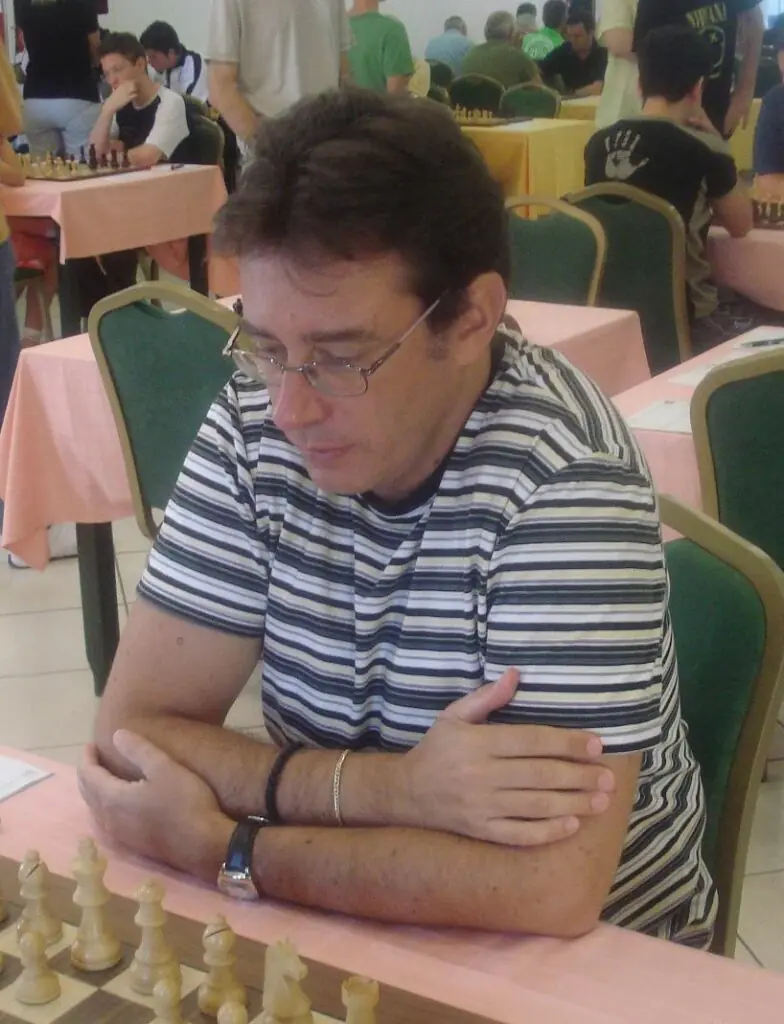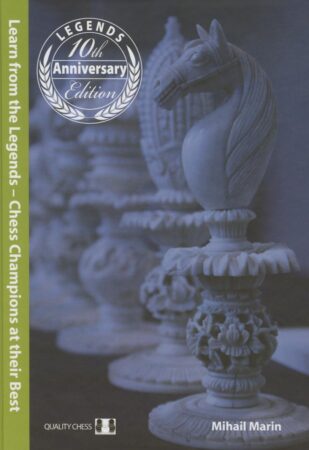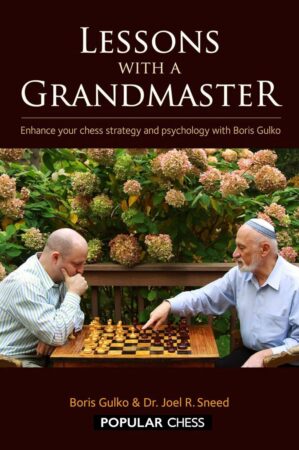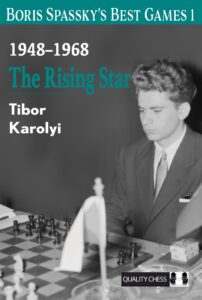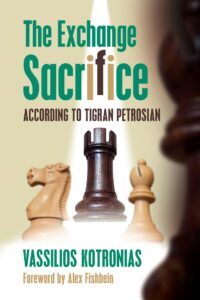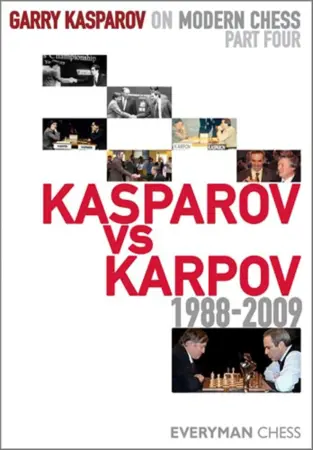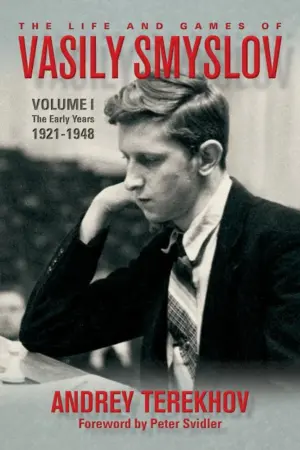Introduction
Marin speaks of Bent Larsen very fondly and extremely knowledgeably. He mentions in the introduction how he missed the opportunity to meet Larsen in person in 2005 and how Larsen, when asked to name books he would recommend to young players, answered: “From the modern ones… there is this book by Marin, in which he analyses the games of several great players.” He was referring to Learn From the Legends. Marin wrote: “It was in that moment that I understood that I owed – to Larsen and to chess history – a capital work about him…”
He then began studying Larsen’s games methodically and has examined 120 of Larsen’s wins. About Larsen’s style, Marin mentions an absence of style, but a tendency for concrete play at the first given opportunity. He describes Larsen as a brilliant attacker, who always tried to squeeze the most out of every position, regardless of how dry it was. It was exactly this swashbuckling style and the resistance to compromise and drawish positions that has led to Larsen’s most famous wins, as well as his defeats. We all know the famous game in which Spassky crushed him in 17 moves.
Marin highlights the strategic genius Larsen possessed as well, mentioning two quotes by famous contemporaries. Polugaevsky wrote: “…contrary to the opinion of most commentators, Larsen’s main strength is his strategic play.” Botvinnik said: “Larsen can create things which did not exist in chess before.”
One thing is certain. Larsen was an unrelenting attacking and strategic monster. He was an optimist who fought until every resource the position had to offer got depleted.
Learn From Bent Larsen is Marin’s attempt to highlight the most important features of Larsen’s chess style. Unlike Learn From the Legends 1 and 2, that were divided by chapters, each devoted to one player, this book is similar, except that each chapter is devoted to a single genius.
About the Author
Mihail Marin is a Romanian Grandmaster and an accomplished author. His greatest chess achievement may be qualifying for the 1987 Interzonal. He has also won three Romanian Championships and has played in the Olympiads twelve times.
Marin has written numerous remarkable books, including Secrets of Attacking chess, an English Opening Repertoire in two volumes, a Pirc Defense Repertoire, a Leningrad Dutch Repertoire, a Dutch Sidelines Repertoire, and a Spanish Repertoire, all part of the great Grandmaster Repertoire series by Quality Chess. He has also written Learn from the Legends, and Learn from the Legends 2, in my opinion, his best books.
Learn from the Legends
Marin’s Learn from series began with the original Learn From the Legends, published 20 years ago. Learn From Bent Larsen can be considered the second in the series, since it came out in 2022. Marin mentions in the introduction something that implies that he had intended to write a chapter on Larsen in his new legends volume, but ended up making an entire book out of it due to a lot of material.
The original volume remains one of the most praised chess books ever written. The book consists of eight chapters, devoted to eight chess legends, six of whom became World Champions; Rubinstein, Alekhine, Botvinnik, Tal, Petrosian, Fischer, Karpov, and Korchnoi, and their technique in a specific type of position – one they were most famous for.
In Learn From the Legends 2, published in 2025, Marin has explored the attacking prowess and chess genius of Leonid Stein, Lev Polugaevsky, David Bronstein, Paul Keres, and Lajos Portisch. Unlike the first book, the sequel doesn’t devote each player’s chapter to a particular type of position, but instead, as Marin puts it, “the chapters have a tighter connection with each other than in the original Legends book”.
Structure of the Book
Learn From Bent Larsen is divided into 9 chapters. The final two chapters are devoted to 8 complex test positions and their solutions. That is something Marin has used in the second volume of Legends as well, albeit in a different form, and each chapter ends with exercises. In the first volume of Legends there were no test positions.
The first six chapters are devoted to specific traits Larsen possessed – A boundless optimist, initiative and accuracy, Larsen’s hypermodern approach, advancing the rook pawns, endgames the Larsen way, transformations, and, finally, the seventh chapter, titled A World Title Contender’s Biography, gives a brief overview of each stage of Larsen’s career.
Each of the first 6 chapters is structured the same way – a brief introduction followed by numerous well annotated games, which is exactly how Learn From the Legends was structured.
Quality of Annotations
What I wrote in my review of the first and second volume of Learn From the Legends, applies to the Learn From Bent Larsen too: “I don’t believe I’m about to say this, but the annotations are flawless. Every book I’ve read and reviewed so far has had the same flaw, more or less obvious – inadequate annotations, either in quality or quantity. Learn from the Legends is the first exception.”
Mihail Marin has managed to both explain each move, each idea, and each principle and instructive point in detail, and he has managed to find a perfect balance between variations, their depth, and the amount of annotations.” So Learn From Bent Larsen is the third book on my list of perfectly annotated chess books.
The difference between the annotations, both their quality and quantity in the three books, doesn’t exist. They are flawless.
Difficulty
Marin’s teaching approach and the way the material is presented, as was the case in the first and second volume of Learn From the Legends as well, may be best suited for advanced players. They are, however, just as important for beginner and intermediate level players to master. Since Learn From Bent Larsen is a game collection more than anything else, I believe that anyone could follow it with a board on the side. My conclusion is that anyone above beginner level, say 1400 online, would greatly benefit from the book, but advanced players, 1800 FIDE and above, should think of Learn From Bent Larsen and Learn from the Legends 1 and 2 as must-read books for improving their technique and probably one of the best game collections of all time.
The test positions are difficult, but well within any advanced player’s skill level. My completion rate was almost perfect.
Conclusion
If you’ve read the original Learn From the Legends, you probably loved it and want more of the same. This book is exactly that – a perfectly annotated, highly instructive game collection that will not only help develop your chess skills, since Marin’s approach focuses on that, but it will also help you emulate Bent Larsen’s attacking and uncompromising playing style.


